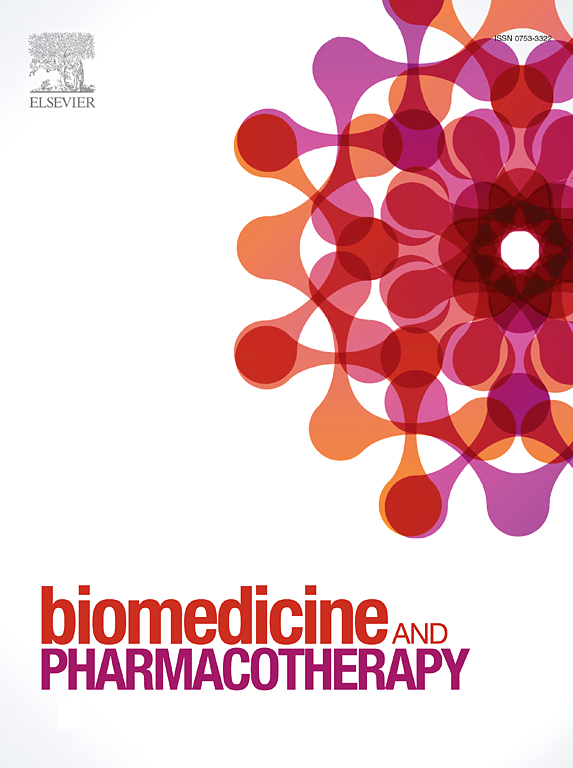在三维基质模型中,I型胶原蛋白的年龄相关变化促进BRAFV600E突变黑色素瘤细胞的侵袭及其对靶向治疗的耐药性
IF 6.9
2区 医学
Q1 MEDICINE, RESEARCH & EXPERIMENTAL
引用次数: 0
摘要
黑色素瘤是最具侵袭性的皮肤癌,死亡率最高。抗突变BRAFV600E疗法,如vemurafenib,改善了黑色素瘤患者的预后;然而,对这些靶向治疗的耐药性经常出现。I型胶原蛋白是肿瘤微环境的关键因素,有助于肿瘤的进展和治疗耐药性。随着年龄的增长,I型胶原蛋白经历结构重塑,改变其纤维组织和机械性能。尽管这些变化已被记录在案,但它们对brafv600e突变的黑色素瘤细胞行为和药物反应的影响尚不清楚。在这项研究中,我们利用体外和体内模型来填补这一关键空白,研究与老年相关的胶原重塑如何调节brafv600e突变的黑色素瘤对vemurafenib的反应。我们的研究结果表明,在体外使用3D培养基质模型,旧胶原蛋白促进1205Lu细胞的增殖,并保护1205Lu和SKMEL28细胞免受vemurafenib效应的影响。这与YAP表达升高有关,提示机械转导在耐药性中的作用。三维胶原基质球体模型显示,老化的胶原增强了1205Lu细胞的侵袭特性,这与AXL受体的上调有关。在体内实验中,vemurafenib降低了在年轻胶原基质中植入黑色素瘤细胞的胸腺小鼠的肿瘤生长,但在老化胶原基质中没有作用。总的来说,我们的数据表明,年龄相关的I型胶原蛋白改变导致抗brafv600e治疗brafv600e突变黑色素瘤的疗效降低。本文章由计算机程序翻译,如有差异,请以英文原文为准。
Age-associated changes in type I collagen promote the invasion of BRAFV600E mutated melanoma cells and their resistance to targeted therapies within three-dimensional matrix models
Melanoma represents the most aggressive form of skin cancer, with the highest rate of mortality. Anti-mutated BRAFV600E therapies, such as vemurafenib, has improved the prognosis for melanoma patients; however, resistance to these targeted therapies frequently emerges. Type I collagen—a key element of the tumor microenvironment—contributes to tumor progression and therapeutic resistance. With aging, type I collagen undergoes structural remodeling that alters its fibrillar organization and mechanical properties. Although these changes have been documented, their impact on BRAFV600E-mutated melanoma cell behavior and drug response remains unclear. In this study, we utilized both in vitro and in vivo models to fill this critical gap by investigating how collagen remodeling associated with advanced age modulates BRAFV600E-mutated melanoma response to vemurafenib. Our findings indicate that in vitro—using a 3D culture matrix model—old collagen promotes increased proliferation of 1205Lu cells and protects both 1205Lu and SKMEL28 cells from vemurafenib effects. This was associated with elevated YAP expression, suggesting a role for mechanotransduction in drug resistance. The 3D collagen matrix spheroid model revealed that aged collagen enhances the invasive properties of 1205Lu cells, which correlated with an upregulation of the AXL receptor. In vivo, vemurafenib reduced tumor growth in athymic mice xenografted with melanoma cells embedded in young collagen matrices, but not in those with aged collagen. Collectively, our data suggest that age-related alterations in type I collagen contribute to reduced efficacy of anti-BRAFV600E therapies in BRAFV600E-mutated melanoma.
求助全文
通过发布文献求助,成功后即可免费获取论文全文。
去求助
来源期刊
CiteScore
11.90
自引率
2.70%
发文量
1621
审稿时长
48 days
期刊介绍:
Biomedicine & Pharmacotherapy stands as a multidisciplinary journal, presenting a spectrum of original research reports, reviews, and communications in the realms of clinical and basic medicine, as well as pharmacology. The journal spans various fields, including Cancer, Nutriceutics, Neurodegenerative, Cardiac, and Infectious Diseases.

 求助内容:
求助内容: 应助结果提醒方式:
应助结果提醒方式:


